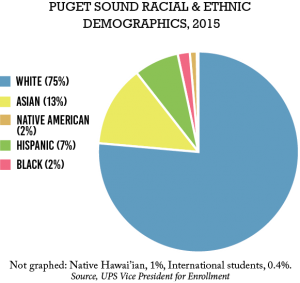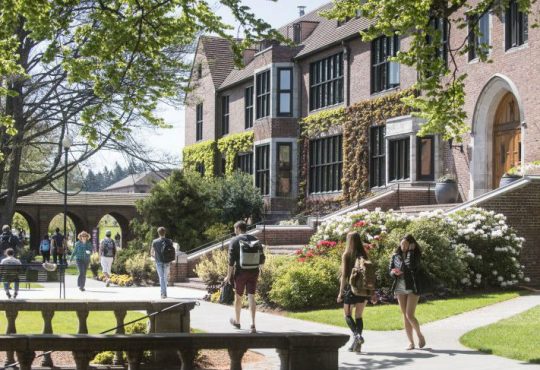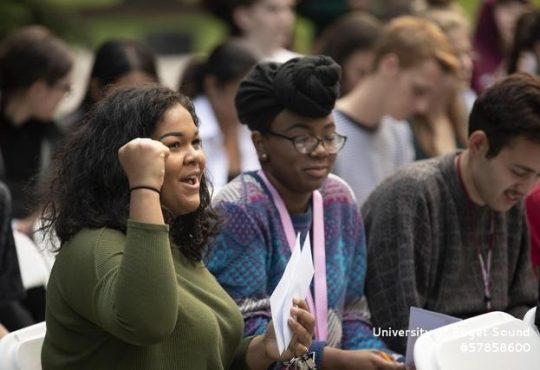
Eight years after Abigail Fisher’s rejection from the University of Texas at Austin (UT Austin), the Supreme Court is primed to render a decision as to whether or not her denial from the University was due to affirmative action policies that excluded her, and whether or not that choice was unconstitutional.
Any admissions policy that uses race as a basis to admit students could end, according to SCOTUS blog.
Affirmative action at UT Austin has a long and complicated history.
After a lower court struck down Affirmative Action as unconstitutional in 1996, the legislature sought a way to circumvent the decision and encourage minority race students enrolling in college.
“The legislature responded by saying ‘OK, if we can’t use race, we’re gonna say everybody in the top 10 percent. And that’ll sweep up some African-Americans and Hispanics, as well as whites’…. And it did,” then State Senator Jeff Wentworth said in an interview with CBS news in 2004.
In 2003, however, a Supreme Court ruling made Affirmative Action in some instances legal again, and UT Austin announced that it was reinstating affirmative action policies that day.
In 2011, according to a report to the Governor and legislature from the University of Texas at Austin, 80 percent of students offered admission to the University were admitted based on the top 10 percent law. The remaining 20 percent of seats were available to students on a traditional application basis. These applicants were reviewed based on a variety of factors, including their grades, personal achievement and race. This is the pool Fisher found herself in, and the factors used to judge her is what is under review by the Supreme Court.
Fisher’s argument is simple: she believes that she was denied access to the college exclusively because of her race, and that her place was taken up by a student of color who was offered her spot because of affirmative action. The college she is fighting against, UT Austin, has an equally simple response. SCOTUS blog commented on the issue.
“Fisher still believes that she was excluded solely because she is white, based on what she views as a flawed, race-based admissions policy. The university still insists that her scores were not high enough, and she was not eligible for an automatic place in the class, so there was no way she could have been admitted, whatever her race,” the blog reads.
The Supreme Court was expected to provide its opinion on the Fisher case by the end of this year.
However, on Saturday, Feb. 13, Justice Scalia, one of the longest serving justices on the Supreme Court, was found dead at age 79, according to the New York Times. The death of the hyper-conservative justice has thrown the balance of the Supreme Court, and until a new Justice fills the vacancy it is entirely possible that Fisher’s case may not be processed.
“With Scalia out of the picture and with Kagan unable to participate in the decision—because as solicitor general she was involved in filing amicus briefs for the Obama administration—you’ve only got seven justices. Given the significance of the issue, I think either Chief Justice Roberts or Justice Kennedy may say, you know, making a big decision with just seven justices might not be a good idea,” Jasinski said.
According to Jasinski, the case could be sent back to the lower courts, and the case may never be heard by the Supreme Court again.
“The longer though that the case gets delayed, the greater the chance that the court is just gonna say, ‘we’re done with this’… they’re gonna say it’s moot,” Jasinski said. In that case, the lower courts decision would be upheld, which ruled in favor of the UT Austin.
According to Jenny Rickard, Vice President for enrollment at the University of Puget Sound, even if Abby should win, it would not impact the admissions policies that the University employs with regards to race. “If Fisher v. Texas leads to the end of affirmative action, Puget Sound would still maintain its financial aid commitments… and continue to expand our recruitment outreach to students of color,” Rickard said.
The University employs a variety of programs designed to bring more students of color to campus, including the Tacoma Public Schools initiative, in which all public school students from Tacoma have their full demonstrated need met, the Access Programs cohort, in which small groups of students that have gone through the Access program at the university receive a scholarship and the university’s partnership with the Posse foundation, in which groups of students are recruited from low income communities and offered scholarships to a college in which they attend with other members.
The University is now test-optional, which hopefully will expand the recruitment of students of color. The University also maintains a partnership with the American Honors organization to bring students from community colleges to the University of Puget Sound. Although the recruitment for these programs is not explicitly framed in terms of race, Rickard stated racial diversity as a goal. “With TPS, Access, and Posse we anticipate enrolling 80-100 more students of color than we do now over the next four years,” she said. This would be a 15 percent increase of students of color at the University within four years, compared to the roughly 4 percent increase in students of color between 2011 and 2015 enrolled at the University, according to data provided to The Trail by Rickard.
The admissions office also has a position designed specifically for recruitment of underrepresented groups.
“Just under a year ago, we modified our admission office structure to redefine an existing position to be devoted to working within the office and the campus community to enhance our efforts to enroll students of color and other students traditionally underrepresented on our campus and in higher education generally. We are currently in the process of hiring a student to be a Multicultural Recruitment Assistant to support our efforts to work with different cultural groups on campus to support our campus visit programs, do telephone outreach to admitted applicants, and more,” Rickard said.
One of the limitations of recruitment programming is financial. Rickard described this in the Enrollment Work Group, which is comprised of faculty, staff and Trustees.
“Because Puget Sound has limited financial resources and is not currently able to meet the full demonstrated financial need of all of our students, the group recommended that the university develop a set of local, national, and international initiatives to cultivate diversity in its many forms among its student body that would align with our mission and strategic plan,” Rickard said.
Rickard was further questioned about whether the university planned on expanding recruitment efforts into historically underrepresented areas.
“While we do visit schools with significant populations of students of color in our efforts, we are particularly focused on the public high schools of Tacoma, Oakland, San Francisco, and the Bay Area generally where we are able to commit to meeting the full financial need of admitted applicants either through our Tacoma Public Schools or Posse partnerships,” Rickard said.





